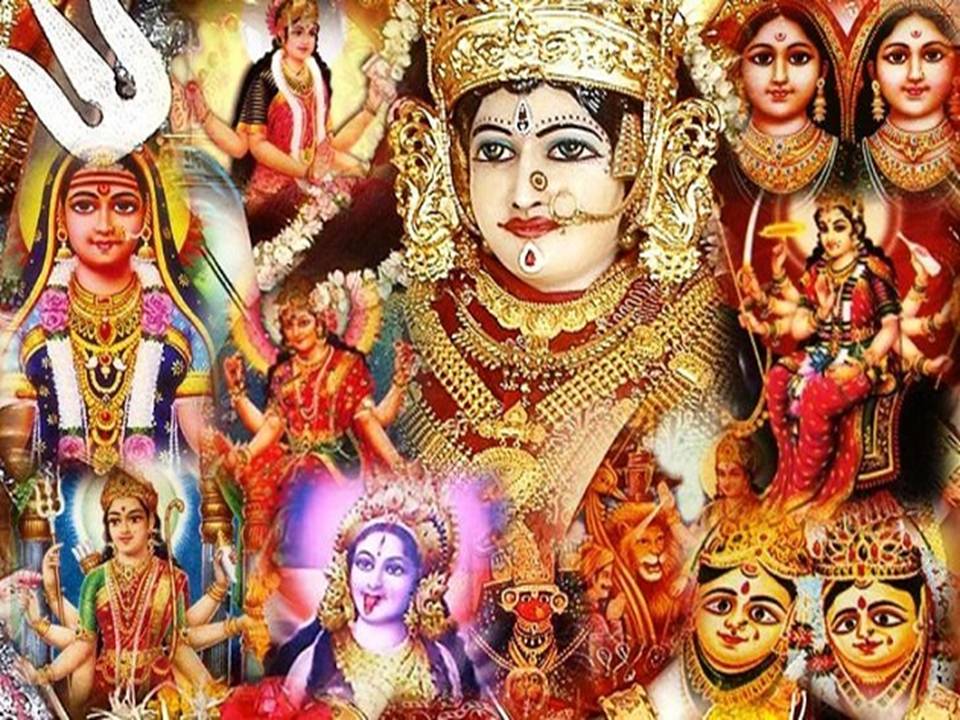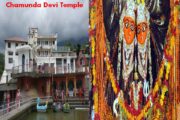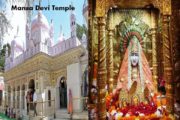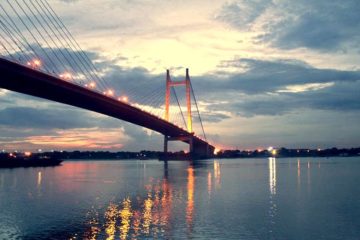Himachal Pradesh is quite aptly called “Devabhoomi” – Abode of the Gods. There are more than 2000 temples and religious places scattered all over the state. Many of these are quite well-known and attract thousands of devotees throughout the year.
Naina Devi Yatra :
According to legend, Lord Shiva’s consort Sati once burnt herself alive in Yagna to avenge an insult to Lord Shiva. The distraught Shiva picked her corpse and gyrated his horrified dance. Then Lord Vishnu unleashed his Chakra and cut the Sati’s body into fifty one pieces to save the earth from Shiva’s wrath. All the fifty one places – where parts of Sati’s body fell, became known as Shakti Peeths.
Chamunda Devi Temple :
It is an enchanting spot with glorious views of the mountains, the Baner Khud, Pathiar and Lahla forests. 15-km from Dharamshala a tiny village of Dadh on Palampur road is the famous temple dedicated to Goddess Chamunda Devi. On reaching the temple a glorious view of Dhaula Dhar on three sides and ‘Baner Khud’ flowing alongside the temple. The temple has artistic carvings on its lintel, pillars and the ceiling.
Jwalamukhi Temple :
(The Flaming Goddess) recognized as one of the 51 Shaktipeeths of India, Jwalamukhi’s Devi Temple, tended by the followers of Goraknath, is set against a cliff. The picturesque temple, built against a wooded spur, in the Indo-Sikh style, has a dome that was gilded by Mughal Emperor Akbar. An eternally burning flame that issues from a hollow rock in the sanctum is considered the manifestation of the goddess Devi.
Chintpurni Temple :
A winding road goes up to the temple dedicated to ‘Bhagwati Chinmastika’ or Goddess ‘Chintpurni’ who grants all wishes.
Mansa Devi Temple :
A typical example of North Indian architecture Mansa Devi Temple, lying in Bilaspur village, about three kilometers east of Mani Majra in Chandigarh, has two temples dedicated to the goddess. It is believed that the older temple was built by the ruler of Mani Majra.Jawalmukhi ( Jwala Ji ) : Jwalaji (flame) or Jwala Mukhi (flame mouth) is probably the most ancient temple discussed here besides Vaishno Devi. It is mentioned in the Mahabharata and other scriptures. There is a natural cave where eternal flames continue to burn. Some say there are seven or nine flames for the seven divine sisters or the nine Durgas. It is here that Sati’s tongue fell which can now be seen in the form of the flame.
Mata Chintpurni & Chamunda Devi :
The temple dedicated to Mata Chintpurni Devi is located in a village of the same name in District Una, Himachal Pradesh. Devotees have been visiting this Shaktipeeth for centuries to pray at the lotus feet of Mata Shri Chhinnamastika Devi and Mata Shri Chintpurni Devi. They bring with them their worldly concerns and seek blessings from the Devi. It is believed that if you ask something from the Devi with a true heart, your wish will be granted.
Baijnath & Laxmi Narayan Temple :
built in 804 A.D. and dedicated to Shiva Vaidyanatha. Its tall shikhara carved in stone is framed by the imposing snow capped peaks of Dhauladhars. The linga enshrined in its sanctum is one of the 12 jyotirlingas in the country. Every year during the Shivratri fair, thousands of pilgrims descend on Baijnath for the colourful fair and festivities. It is 16-km from Palampur and 56-km from Dharamsala.
Vaishno Devi Temple :
Faith has moved mountains. From a cave shrine tucked away deep in the Trikuta Mountains of Kashmir to a bustling religuous centre, the call of Mata Vaishno Devi has drawn and converted many a non-believer. Those who come as tourists leave as staunch followers singing her praises. This is the ultimate refuge of the helpless. The one place that answers your prayers. Where all dilemmas are resolved.
The holy cave shrine of Vaishno Devi is nestled in a beautiful recess of the Trikuta Mountains forming a part of the lower Himalayas. It is located 61 km north of Jammu at a height of 5,200 feet above the sea level in the state of Jammu and Kashmir. In the cave there are images of three deities viz. the Mahakali, Mahalakshmi and Mahasaraswati. The shrine is visited all through the year, but the path is difficult during the winters when the route is often blocked by snow-fall.
| DEPARTURE/RETURN | Delhi to Delhi | ||||
| LOCATION | Delhi to Delhi | ||||
| DEPARTURE TIME | Please arrive at least 2 hours before the flight / Train. | ||||
| INCLUDED | Accommodation in well appointed Dbl.Room. | ||||
|
NOT INCLUDED |
|
||||












